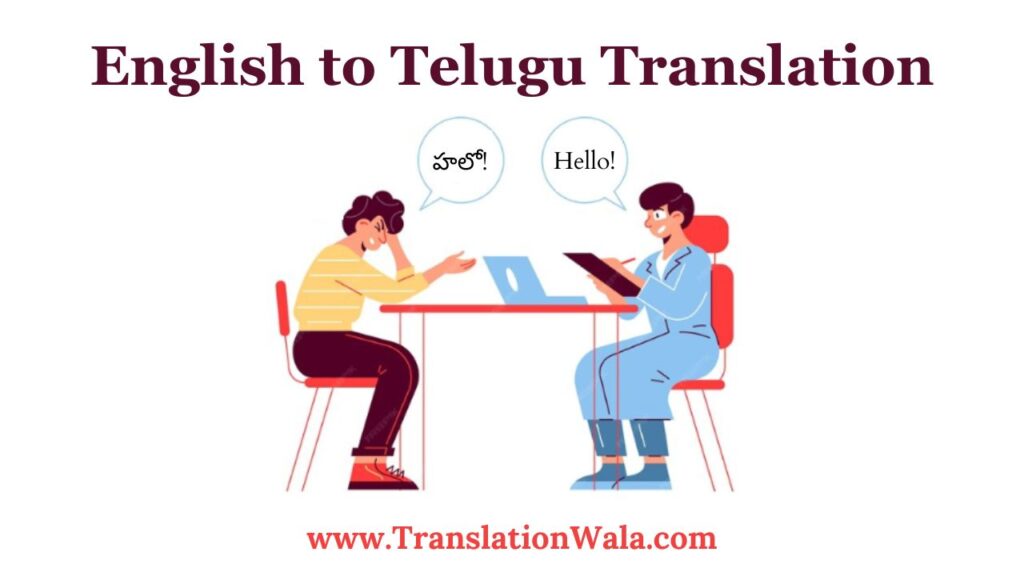Over 80 million people speak Telugu around the world. It has a rich literature history and a lively society. It’s becoming more and more important to have accurate and detailed English to Telugu translation as the world gets smaller and contact crosses countries. This blog post goes into great detail about the complicated process of translation, giving information to people who want to become translators and people who want to find high-quality texts.
The Nuances of Telugu
As a Dravidian language, Telugu has its own set of sounds and rules for grammar. In contrast to English, it is a highly inflected language, meaning that the ends of words show things like case, tense, and gender. Because Telugu is so complicated, you need a translator who knows how the language’s words and sentences work together in subtle ways to make sure that your versions capture the spirit of the original.
Some of the main ways that English and Telugu are different are shown below:
- Verb Conjugations: Verbs in Telugu change forms depending on the number, person, mood, and quality of the subject. An English line like “I was going to the market” needs to be translated into Telugu by taking into account the speaker’s connection to the action (past continuous tense) and making sure the word matches these subtleties.
- Sanskrit Influence: A lot of words in Telugu come from the language Sanskrit. These words are called cognates, and a good translator can use them to make the translated text move more naturally. They will also know about the background to avoid using unintentional cultural references.
- Gender System: In Telugu, words and adjectives have three genders: male, feminine, and neutral. In English, they only have two. To make sure the translation is correct in Telugu, translators must pay close attention to the gender of words in the source text.
Also Read: Navigate Diversity: Mastering Impactful English to Kannada Translation

Beyond the Literal: Capturing the Spirit
A good English to Telugu translation does more than just swapping words, even though correctness is very important. It’s about being able to understand the source text’s meaning, tone, and cultural setting and translate those things into Telugu correctly.
- Context is King: Translators have to carefully read the original text to understand what it means. This could mean doing study on the subject, the audience, and the reason for the translation.
- Finding Equivalents: Not all words can be used in more than one language. A good translation can find the closest Telugu word that means the same thing and makes you feel the same way as the English word.
- Cultural Sensitivity: Language has cultural meanings behind it. To keep the translated text from being misunderstood or funny by accident, the translator needs to know about both English and Telugu cultural references.
Machine Translation vs. Human Touch
Machine translation (MT) tools are easier to get to now that technology has improved. It’s possible for MT to be useful for a first draft or easy text, but languages like Telugu are hard for it to handle. This is where the person translator’s skill comes in:
- Understanding Nuance: MT systems often fail to translate slang, snark, and humor because they don’t understand the subtleties of language. Human translators can get around these problems and make versions that are clear and meaningful to the intended audience.
- Cultural Awareness: A person translator who knows a lot about both cultures can make sure that the tone of the original text is kept and that no cultural faux pas are made.
Choosing the Right Translation
It is very important to find the right translation for your English to Telugu job.
- Expertise: If you need an translation for legal, medical, technical, or creative work, look for someone who has worked in that area before.
- Qualifications: Certifications from well-known translation organizations can be a good sign of how good a translation is.
- Portfolio: If you look at a translations past work, you can get a sense of their style and how well they can handle your job.
The Final Takeaway
When done right, English to Telugu translation helps people from different countries talk to each other. You can make sure your message gets across clearly to people who speak Telugu by learning about the language’s complexities, the significance of cultural background, and the limits of machine translation. Remember this the next time you need a good English to Telugu translation: it’s not just about the words; it’s about getting your point across.



